The connection between these three provinces will promote the planning and investment process of strategic traffic axes connecting coastal areas with mountainous areas, including national highways, railways, expressways and inter-commune and inter-district traffic routes.
Synchronous development of transport infrastructure
One of the most important advantages that Binh Thuan province will have after the reorganization is the investment and synchronous development of traffic infrastructure. The Dau Giay - Phan Thiet and Phan Thiet - Vinh Hao expressways have been put into operation and will be the "backbones" to help connect the region effectively.

The arrangement also creates favorable conditions for the expansion of new routes, such as the coastal road connecting Binh Thuan with Ba Ria - Vung Tau , Khanh Hoa; or the cross-plateau highway connecting Binh Thuan - Lam Dong - Dak Nong, which is expected to be implemented. These routes not only help shorten travel time between localities, but also expand opportunities for the development of industrial parks, industrial clusters, and inter-regional eco-tourism.
“Convenient transportation is also a prerequisite for attracting domestic and foreign investment, especially in areas such as logistics, processing industry, renewable energy and tourism. With its location in the center of the new province, Binh Thuan will play the role of a strategic “transit station” in the development connection network of the whole region,” said Mr. Nguyen Van Cuong, Director of Hung Cuong Import-Export Company (Binh Thuan province).
Great opportunity to restructure the agricultural value chain
The new Dak Lak province, based on the arrangement of Dak Lak and Phu Yen provinces, with a total area of about 18,170 km 2 , will become one of the localities with the largest territorial scale in the country. With a population of more than 2.82 million people, the new Dak Lak province is among the 10 most populous provinces, creating an attractive labor, consumption and investment market. The new geographical space (stretching from the Central Highlands to the South Central Coast) helps the new province possess unique advantages: both in-depth large-scale agricultural production (of Dak Lak) and the ability to develop industry - logistics associated with seaports (of Phu Yen).
Strengthening regional connectivity
Mr. Vo Trung Manh, Chairman of the People's Committee of Tu Mo Rong district, Kon Tum province, said that Tu Mo Rong is a key medicinal plant growing area of the Central Highlands with more than 4,000 hectares, including about 3,000 hectares of Ngoc Linh ginseng. The medicinal plant potential of the locality has not yet been fully exploited. The arrangement between Kon Tum province and Quang Ngai province will be a great opportunity for the medicinal plant industry of Tu Mo Rong, a lever for medicinal plants in Tu Mo Rong district to expand further, bringing greater value to the people and the whole region.
In Lam Dong, a number of enterprises have recently shifted their investments, bringing high-tech agriculture to Dak Nong province. Mr. Tran Hong Thai, Chairman of Lam Dong Provincial People's Committee, analyzed that it is expected that Lam Dong province will have the leading output of coffee, durian, silk, and cold-water fish in the country. In recent times, Lam Dong has proactively worked with Dak Nong and Binh Thuan to try to take advantage of the potential from the mountains to the sea, trying to call for investment, build aluminum factories, exploit bauxite and transport it to ports, develop tourism...
According to Mr. Hoang Danh Huu, Executive Director of EDE Farm Service Trading Company Limited, after the reorganization, the new Dak Lak province will have all the important factors such as: abundant agricultural raw material areas, quality rural labor resources, and especially the gateway to the sea via Vung Ro port. This opens up a great opportunity to restructure the agricultural value chain, especially key products such as coffee, pepper, durian, not only exporting raw products but also upgrading finished products for direct export through the province's seaport, reducing dependence on distant ports such as Cat Lai or Cai Mep - Thi Vai.
Phu Yen currently has Tuy Hoa airport, Vung Ro port, National Highway 1A, National Highway 25 connecting to the Central Highlands. Dak Lak currently has Buon Ma Thuot airport, many highways are being invested such as Khanh Hoa - Buon Ma Thuot, Gia Nghia - Chon Thanh, helping to form an inter-provincial - inter-regional logistics network. After the arrangement, the new Dak Lak province will have clear advantages in infrastructure, with sufficient conditions to develop industrial parks, urban - service areas and agricultural processing industrial clusters, especially in border and coastal areas.
Mr. Truong Cong Thai, Vice Chairman of Dak Lak Provincial People's Committee, informed that the Provincial People's Committee has reported to the Prime Minister on the proposal to upgrade National Highway 29 connecting Dak Lak and Phu Yen from 2 lanes to 4 lanes, with a cost of about 10,000 billion VND. After being upgraded and expanded, National Highway 29 will smoothly connect Phu Yen with Dak Lak and important traffic axes such as Vietnam's coastal road, National Highway 1, the North-South Eastern Expressway, National Highway 14. At the same time, it connects with seaports, airports, border gates... This is considered the most convenient route, creating conditions and driving force for the development of economic corridors of the two localities and neighboring areas.
The Department of Construction of Lam Dong province has just advised the People's Committee of Lam Dong province on proposing the Central Government to include important transport infrastructure investment projects in the list of projects under the State Steering Committee for important national works and projects after reorganizing with Binh Thuan and Dak Nong provinces. The transport projects all have inter-regional connectivity with the new Lam Dong province.
Specifically, the projects of Buon Ma Thuot - Gia Nghia expressway are 113km long, 4-lane scale, total investment of 27,500 billion VND; Nha Trang - Da Lat is 80.8km long, 4-lane scale, total investment of 25,058 billion VND; Phan Thiet - Bao Loc - Gia Nghia is 140.6km long, 4-lane scale, total investment of 33,378 billion VND; and the project to invest, renovate and upgrade National Highway 28, Phan Thiet - Di Linh - Gia Nghia section, 197km long, grade III road scale, investment capital of 4,900 billion VND. In addition, there is also the project to upgrade and expand Lien Khuong airport and Phan Thiet airport, with a total investment of more than 15,000 billion VND; The project to restore the 83.5km Thap Cham - Da Lat railway line includes 16 stations and passenger stations (the new line adds 2 stations and 2 passenger stations compared to the old line), with an investment capital of 24,071 billion VND...
Expectations of people in remote areas
In many mountainous areas of Kon Tum province, people expect that after the reorganization of Kon Tum and Quang Ngai provinces, the quality of healthcare will be improved.
According to Mr. A Nep, Deputy Secretary of the Party Cell of Mo Banh 2 Village (Dak Na Commune, Tu Mo Rong District, Kon Tum Province), the village has 120 households of the Xo Dang ethnic group. When the National Assembly passed the resolution on the arrangement of provincial-level administrative units, including Kon Tum and Quang Ngai, people were very interested and expected to access more modern health services. Comrade Nguyen Duc Tuy, Standing Deputy Secretary of the Kon Tum Provincial Party Committee, shared: After the arrangement with Quang Ngai Province, we will have more resources, conditions and mechanisms to further improve in these two areas. The arrangement of the two provinces will promote the strengths of each locality, creating an opportunity for people in the mountainous areas of Kon Tum Province to enjoy better public services, especially in the fields of health and education.
In the two provinces of Dak Lak and Dak Nong, especially in areas where ethnic minorities live and in remote areas, education is still facing many difficulties. There are still gaps in facilities, teaching staff and opportunities for students to access quality education.
Mr. Tran Van Vuong, Head of the Department of Education and Training of Dak Mil district, Dak Nong province, said that the district has a high proportion of ethnic minorities and is located on the border, so the conditions for educational development are still limited. Not only lacking in infrastructure, Dak Mil is currently lacking about 100 teachers and school staff. The prolonged shortage of teachers has caused the organization of teaching to be interrupted, greatly affecting the learning process of students, especially those in remote and isolated areas who are already disadvantaged. After merging with Lam Dong province, the locality will have more resources to invest in infrastructure and recruit and train a sufficient number of teachers, ensuring quality.
It can be affirmed that the arrangement of provincial-level administrative units will create favorable conditions for reform, improve the efficiency of state management and allocate resources more fairly among regions. For Binh Thuan province, this is an opportunity to significantly improve social security issues, especially in remote areas and ethnic minority areas. "Schools, health stations, and regional hospitals can be invested in to expand or upgrade to meet standards, helping Binh Thuan people, especially in mountainous districts such as Tanh Linh, Duc Linh, Bac Binh, Ham Thuan Bac, to have easier access to basic services," said Mr. Nguyen Thanh Giang, Chairman of the People's Committee of Ham Liem commune, Ham Thuan Bac district (Binh Thuan province).
Source: https://www.sggp.org.vn/mo-nhung-con-duong-huyet-mach-post800722.html


![[Photo] "Ship graveyard" on Xuan Dai Bay](https://vphoto.vietnam.vn/thumb/1200x675/vietnam/resource/IMAGE/2025/11/08/1762577162805_ndo_br_tb5-jpg.webp)

![[Photo] Heavy damage after storm No. 13 in Song Cau ward, Dak Lak province](https://vphoto.vietnam.vn/thumb/1200x675/vietnam/resource/IMAGE/2025/11/08/1762574759594_img-0541-7441-jpg.webp)



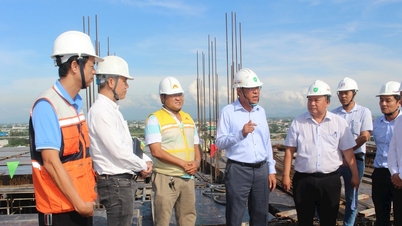


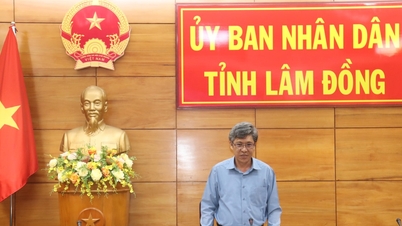






















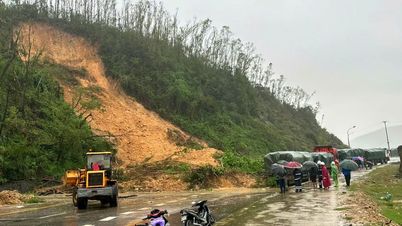


![[Video] Hue Monuments reopen to welcome visitors](https://vphoto.vietnam.vn/thumb/402x226/vietnam/resource/IMAGE/2025/11/05/1762301089171_dung01-05-43-09still013-jpg.webp)

































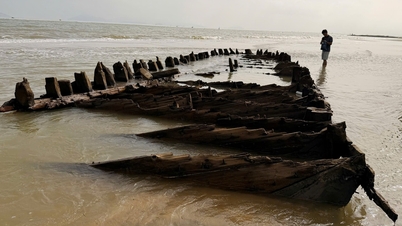
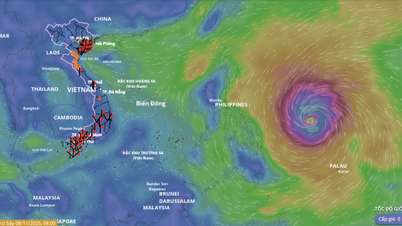
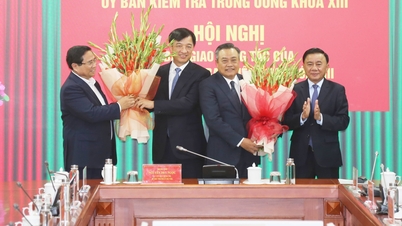





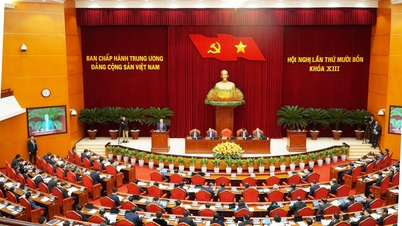

























Comment (0)